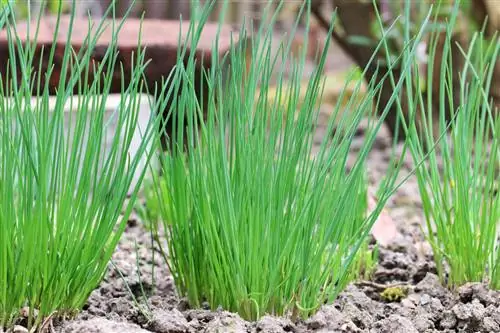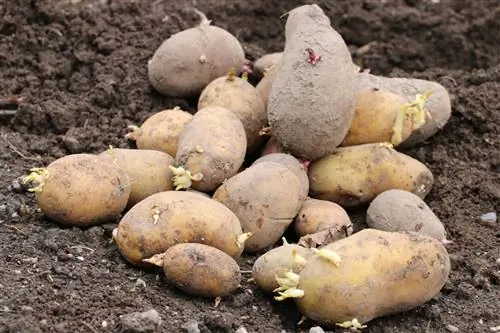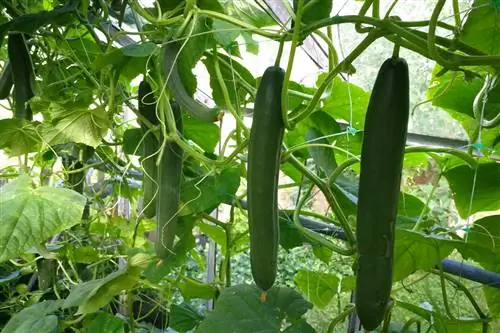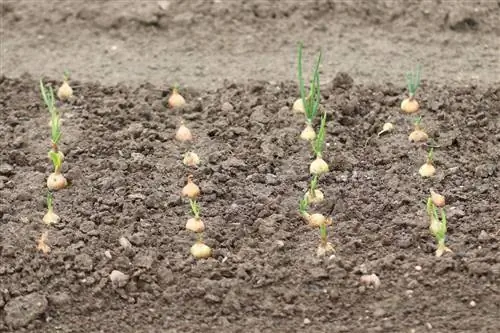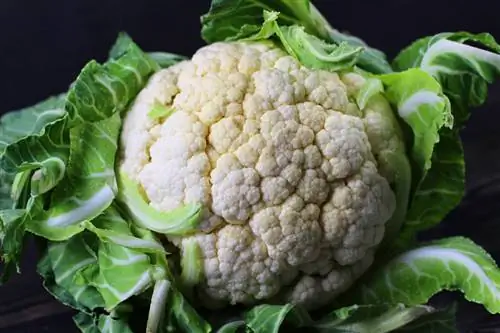- Author admin [email protected].
- Public 2023-12-17 03:39.
- Last modified 2025-01-24 12:45.
Chives give many dishes the right pizzazz. But the dark green stalks can do even more. In the garden, chives are considered the perfect plant for mixed cultivation. We present 11 recommended plant neighbors.
He althy plants through mixed culture
In the wild, certain plant communities come together. The different plants influence each other. This can have a positive, negative or neutral effect. Anyone who knows the effects of plants and puts plant communities together intelligently can enjoy he althy plants and a good harvest.
However, beds are usually created in the garden. The plants do not grow together in a community, but rather separately and arranged in rows. This makes harvesting and care easier. However, this prevents a positive influence and optimal use of the space.
Advantages of mixed culture
- optimal use of space
- higher crop yield
- Protection against diseases and pests
- Promoting pollination
- favorable influence on soil quality
- Reducing drying and erosion
- Reducing Weeds
- Conservation of biodiversity
Chives (Allium schoenoprasum) are a wonderful bedding partner for ornamental and useful plants.
Characteristics of chives
- easy care
- hardy
- repels snails, aphids and carrot flies
- helps against powdery mildew and downy mildew
- attracts bees, bumblebees and beneficial insects
Did you know
that chives are also called rush leeks because of their similarity to rushes? In some regions it is called grass garlic.
Suitable plant neighbors for chives
Apple trees (Malus domestica)

Underplant your apple trees with chives. The spice plant thrives well on the shady tree disc. During flowering, chives magically attract bees and other pollinating insects. This supports pollination of fruit trees. For apple trees, underplanting with chives helps against fungal diseases such as mildew.
Strawberries (Fragaria)
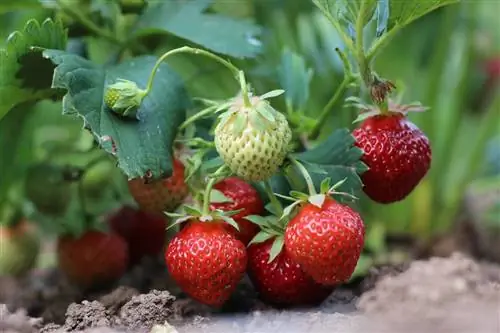
Although sweet strawberries and spicy chives are rarely found together in dishes, they are the perfect neighbors on the bed. Chives protect strawberry plants from fungal attack. The dark green stalks protect strawberries from mildew infection.
Cucumbers (Cucumis sativus)
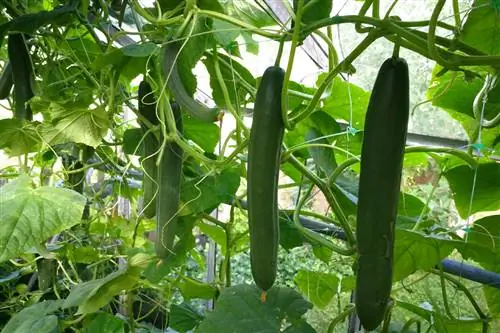
Chives and cucumbers are great bed neighbors. Cucumbers are often affected by powdery mildew or downy mildew. Chives help ward off the dreaded fungal disease.
By the way, Chervil and basil also help against mildew on cucumbers and other crops.
Cherry trees (Prunus avium)
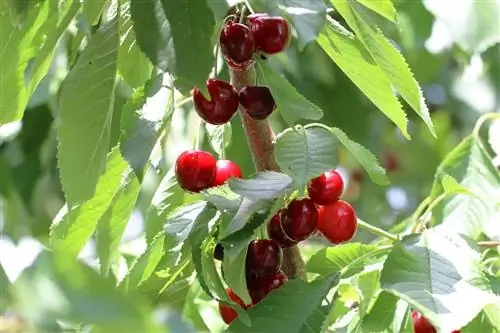
Place chives on the tree disc of your cherry trees and benefit from their attraction to bees and bumblebees. Choose early-flowering chive varieties.
Lettuce (Lactuca sativa)
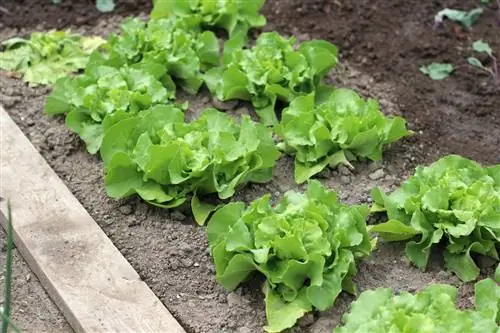
Lettuce and chives are inseparable in fresh salads. The he althy plants complement each other on the bed. Chives effectively repel snails. Plant the edges of the bed with chives and enjoy the intact salad. Lettuce is a medium-rooted plant, so the shallow-rooted chives do not compete with nutrients.
Carrots (Daucus carota)
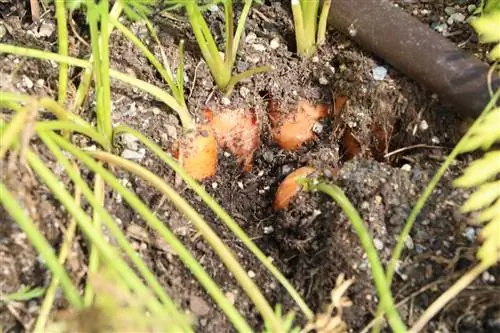
The shallow-rooted chives and deep-rooted carrots are the perfect neighbors in the bed. They do not compete for nutrients in the soil. Living together protects the carrots because the strong smell of the leek drives away the carrot fly.
Parsnips (Pastinaca sativa)
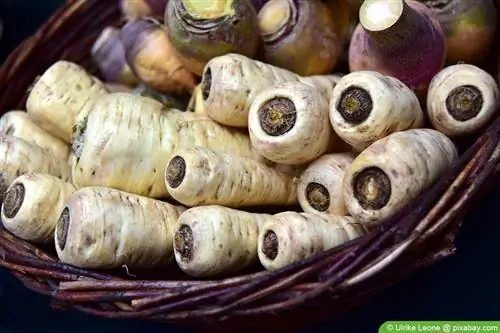
Parsnips were almost forgotten. The he althy winter vegetables have made their way back into kitchens and onto restaurant menus. In the garden, the deep-rooted parsnips thrive when mixed with shallow-rooted chives. Monoculture parsnips often suffer from aphids or powdery mildew. A bed community with the odorous chives can help against this.
Roses (Pink)
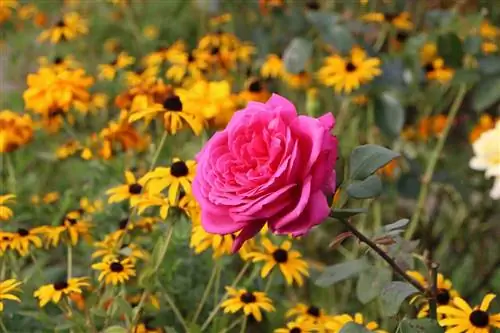
Roses and chives are a strange pair at first glance. But the green leek protects the roses from the dreaded rust fungus. Combine the plants and enjoy intact, he althy roses.
Rosemary (Rosmarinus officinalis)
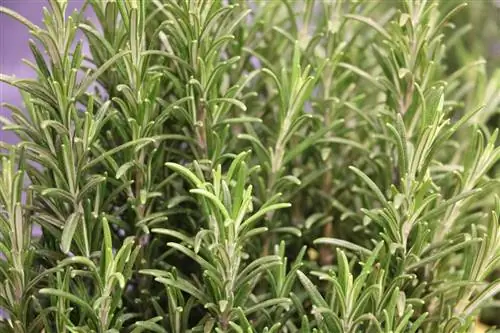
Herbs often thrive better in mixed cultures than alone. Plant deep-rooted rosemary and shallow-rooted chives together. The spices strengthen each other.
Tomatoes (Solanum lycopersicum)
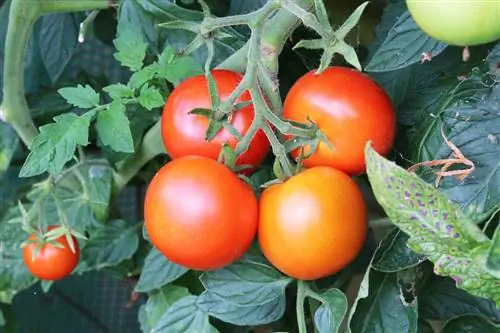
The Germans' favorite vegetable benefits from a mixed culture with chives. The flowering leek is a real pasture for bees. Flower-pollinating insects and beneficial insects such as ladybirds are magically attracted to the purple chive flowers. At the same time, the herb protects the soil from drying out. Plant chives between the tomatoes and look forward to a good yield.
Wine (Vitis)

Wine has deep roots. Chives, on the other hand, have shallow roots, so there is no competition for nutrients in the soil. Green leeks help keep mildew away from grape vines.
By the way, In agriculture, the field is protected from soil fatigue by changing plantings every year. In allotments, mixed culture helps maintain soil quality.

